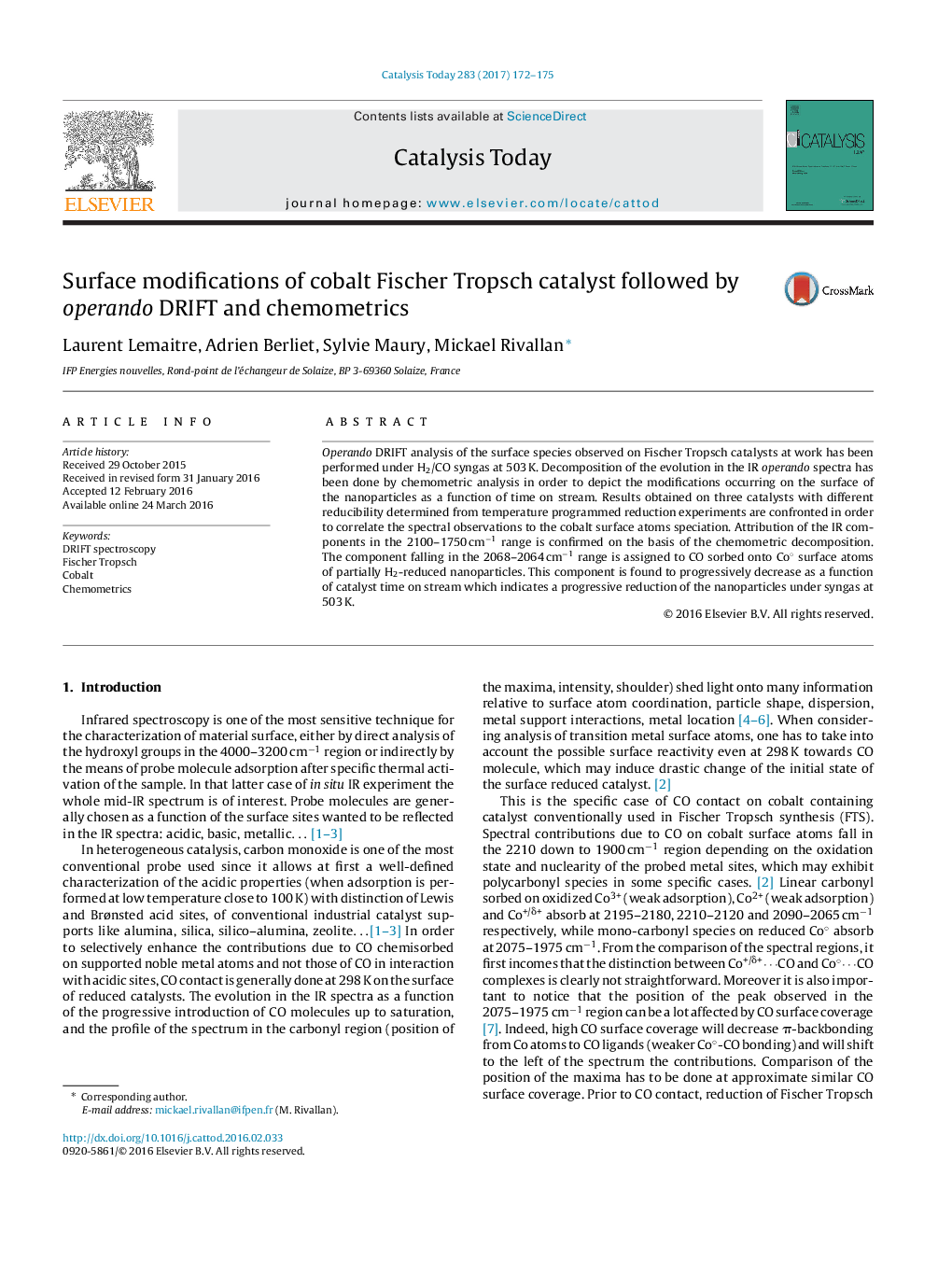| Article ID | Journal | Published Year | Pages | File Type |
|---|---|---|---|---|
| 6455282 | Catalysis Today | 2017 | 4 Pages |
â¢Fischer Trosch catalysts have been analyzed by operando DRIFT spectroscopy.â¢Chemometrics allow a description of surface species and nanoparticles evolutions.â¢Correlation between TPR and IR is found about reduction level of cobalt nanoparticles.
Operando DRIFT analysis of the surface species observed on Fischer Tropsch catalysts at work has been performed under H2/CO syngas at 503 K. Decomposition of the evolution in the IR operando spectra has been done by chemometric analysis in order to depict the modifications occurring on the surface of the nanoparticles as a function of time on stream. Results obtained on three catalysts with different reducibility determined from temperature programmed reduction experiments are confronted in order to correlate the spectral observations to the cobalt surface atoms speciation. Attribution of the IR components in the 2100-1750 cmâ1 range is confirmed on the basis of the chemometric decomposition. The component falling in the 2068-2064 cmâ1 range is assigned to CO sorbed onto Co° surface atoms of partially H2-reduced nanoparticles. This component is found to progressively decrease as a function of catalyst time on stream which indicates a progressive reduction of the nanoparticles under syngas at 503 K.
Graphical abstractFischer Trosch catalysts have been analyzed by operando DRIFT spectroscopy. Chemometric decomposition of IR spectra allows a subtle description of surface species and nanoparticles evolutions.Download high-res image (102KB)Download full-size image
